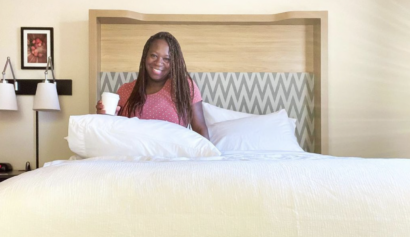Having counseled thousands of parents — and having been one myself — for some 40 years, when I’m asked where baby should sleep I simply answer, “Wherever all family members sleep the best.” Some infants need more sleeping closeness in the early months; others later on as they go through the normal stage of nighttime separation anxiety. But besides getting a good night’s sleep — which is vital for parents too — you also want to help your child develop a healthy sleep attitude so that sleep is a state that’s both pleasant to enter and fearless to remain in for a while. This is why I find that sharing a sleep environment, when done safely, can be a healthful experience for both mother and child.
Though this practice is often called room-sharing, I call it “co-sleeping” and define it as a mother and her baby sleeping close enough so that the mother can easily reach out to comfort and nurse him, though not in the same bed. For optimal safety, I recommend using a co-sleeper, a bassinet that attaches securely to the side of the parents’ bed, allowing mother and baby to sleep near one another, yet on separate sleeping surfaces.
There has been much controversy related to sleep-sharing over the years, and both the American Academy of Pediatrics (AAP) and the U.S. Consumer Product Safety Commission (CPSC) advise parents against having their baby sleep in the same bed — which is often called “co-bedding” or “bed-sharing” — due to the risk of suffocation. However, even organizations like the AAP that strongly discourage bed-sharing approve the use of a co-sleeper. The AAP’s official position is that the safest place for baby to sleep is in her crib or bassinet in the parents’ room, close to the bed. My opinion is that a co-sleeper is safer still…
Read more: William Sears MD, Parenting

